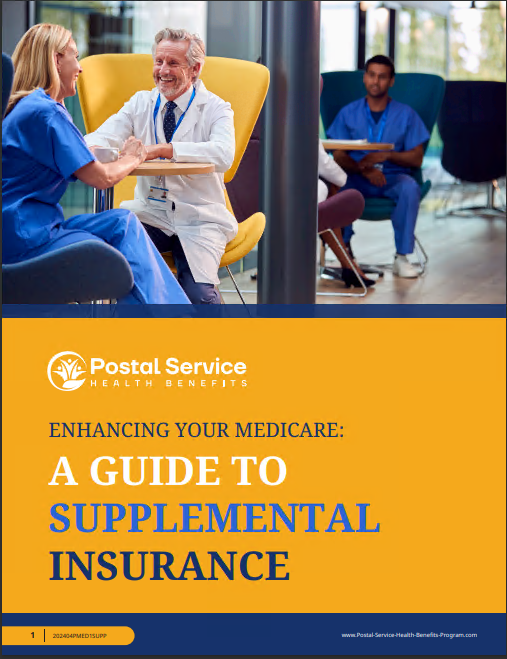Key Takeaways:
-
The 2025 overhaul of the Postal Service Health Benefits (PSHB) program requires USPS employees and retirees to take action to ensure they have the right coverage.
-
By understanding the new program’s requirements and timelines, you can make informed decisions and avoid interruptions in your healthcare.
A Big Year for USPS Healthcare
As a USPS employee or retiree, you’re likely aware that big changes are coming to your healthcare options in 2025. The transition to the Postal Service Health Benefits (PSHB) program is one of the most significant overhauls in years. It’s not just about switching plans—it’s about understanding new requirements, evaluating your options, and ensuring you’re prepared for what’s ahead. This is an opportunity to optimize your benefits while minimizing potential disruptions to your healthcare. Don’t worry; we’ll guide you through the essential steps to help you get ready.
What Makes PSHB Different?
The PSHB program replaces the Federal Employees Health Benefits (FEHB) system for USPS employees, retirees, and their families. Unlike the FEHB, PSHB is tailored exclusively for postal workers, making it more relevant to your needs. Here’s what makes it unique:
-
Exclusive to USPS: PSHB plans focus solely on postal workers, retirees, and their families, eliminating irrelevant options.
-
Medicare Integration: For Medicare-eligible retirees, the program emphasizes seamless coordination with Medicare Part B.
-
Streamlined Enrollment: With fewer plans to choose from, it’s easier to evaluate and select what works best for you.
This focused approach aims to simplify healthcare management while delivering more targeted benefits for USPS employees.
Important Dates to Remember
Mark Your Calendar:
-
November 11 – December 9, 2024: Open Season for PSHB enrollment.
-
January 1, 2025: Your new PSHB coverage begins.
These dates are critical. Missing the enrollment period could leave you without adequate healthcare coverage until the next Open Season. Make sure to set reminders and act promptly. Early preparation gives you the chance to thoroughly review your options and select the best plan for your needs.
Why You Need to Act Now
If you’re currently enrolled in FEHB, you may assume the transition will happen automatically—and it might, but that doesn’t mean you’re off the hook. Here’s why you need to take charge:
-
Automatic Enrollment Might Not Be Ideal: You’ll be moved to a corresponding PSHB plan, but it may not align with your needs or budget. Assessing your plan now ensures you’re not left with unexpected costs or gaps in coverage.
-
More Choices, More Benefits: Open Season lets you explore all available PSHB options to find the perfect fit. You might discover enhanced benefits that better align with your current healthcare priorities.
-
Changing Needs: Your healthcare requirements might have shifted, and now is the time to reassess. Whether it’s family coverage or new medical needs, revisiting your plan ensures you’re fully covered.
Medicare and PSHB: A Key Partnership
One of the most significant changes involves Medicare integration. Starting in 2025, most Medicare-eligible USPS retirees and their family members must enroll in Medicare Part B to maintain PSHB coverage. Here’s what you need to know:
Benefits of Integration:
-
Lower Out-of-Pocket Costs: Medicare Part B works with PSHB to reduce your overall medical expenses. From routine care to specialist visits, this collaboration minimizes your financial burden.
-
Access to More Providers: Enjoy a broader network of healthcare professionals and facilities, expanding your choices for quality care.
-
Predictable Costs: Coordination between the programs ensures fewer surprises in your bills, offering financial stability.
Are You Exempt?
If you retired before January 1, 2025, and are not enrolled in Medicare Part B, you’re not required to sign up. However, doing so may still enhance your benefits under PSHB. It’s worth considering the long-term advantages of integrating your coverage, especially if you anticipate higher healthcare needs in retirement.
Exploring PSHB Plans: What’s Included?
PSHB plans are designed to offer robust coverage similar to FEHB, but with features tailored to postal workers. Key benefits include:
-
Preventive Care: Access to screenings, annual check-ups, and vaccines.
-
Hospital Coverage: Inpatient and outpatient services for serious medical needs, ensuring comprehensive care.
-
Prescription Drugs: Coverage for maintenance and acute medications, supporting both chronic and short-term conditions.
-
Specialist Visits: Affordable access to specialists for complex health conditions, reducing financial strain for advanced care.
Each plan varies, so it’s essential to compare options during Open Season. Look for plans that align with your healthcare usage and budget, especially if you’re managing multiple medical needs.
How to Enroll: Automatic vs. Manual
Automatic Enrollment:
If you’re already enrolled in FEHB, you’ll be automatically transitioned to a comparable PSHB plan. However, automatic enrollment doesn’t mean you should skip Open Season. Reviewing your plan ensures you’re not missing out on better options, like improved coverage or lower out-of-pocket expenses.
Manual Enrollment:
If you’re not currently in FEHB or want to switch plans, you’ll need to actively enroll during Open Season. Missing the deadline could result in coverage delays or gaps, so make this a priority. Taking an active role in the process ensures your plan aligns with your personal and family healthcare needs.
Financial Considerations: What You Need to Know
Premiums:
The government will continue contributing a significant portion of your premium under PSHB, similar to FEHB. However, your share of the cost depends on the plan you choose. By carefully evaluating your options, you can balance costs with coverage to find the best fit for your budget.
Out-of-Pocket Costs:
These include deductibles, copayments, and coinsurance. Reviewing these details will help you budget and avoid surprises. Consider plans with lower out-of-pocket limits if you expect frequent healthcare usage.
Medicare Savings:
If you’re enrolled in Medicare Part B, your overall costs may be lower, as PSHB plans are designed to complement Medicare coverage. This coordination can reduce expenses like copayments and specialist fees, giving you greater financial peace of mind.
Making the Most of Open Season
Open Season is your chance to evaluate and select the plan that best meets your needs. Here are some tips to make the process easier:
-
Assess Your Needs: Consider your current healthcare usage, including prescriptions, doctor visits, and any upcoming medical procedures. Understanding your needs ensures you choose a plan that works for you.
-
Compare Plans: Use available tools to review premiums, benefits, and out-of-pocket costs. Comparing plans side-by-side helps highlight differences that matter most to you.
-
Ask Questions: Reach out to USPS or plan administrators if you need clarification. Getting answers ensures you’re making informed decisions.
-
Involve Your Family: If family members are covered, ensure their needs are taken into account. Their healthcare requirements might influence your choice.
-
Don’t Wait: Procrastination could leave you with fewer options or rushed decisions. Acting early gives you time to carefully evaluate your options.
Preparing for the Transition
The PSHB overhaul isn’t just about picking a plan; it’s about understanding how the new system impacts you and your family. Here’s how to prepare:
-
Review Your Current Plan: Take note of what you like or dislike about your current coverage. This gives you a baseline for comparison.
-
Understand Medicare Requirements: If you’re nearing Medicare eligibility, start the enrollment process early to avoid penalties.
-
Set a Budget: Know how much you can afford in premiums and out-of-pocket expenses. A realistic budget helps narrow your choices.
-
Educate Yourself: Use USPS resources to learn about PSHB and its benefits. Being informed empowers you to make the best decision.
-
Plan Ahead: Think about how your healthcare needs might change in the coming years. Anticipating future needs ensures long-term satisfaction with your choice.
Why the PSHB Transition Is a Big Deal
The move to PSHB isn’t just a routine change—it’s an opportunity to improve your healthcare experience. With better-aligned options, enhanced Medicare integration, and a simplified selection process, PSHB aims to make your life easier. Take advantage of Open Season to ensure your plan meets your needs, fits your budget, and provides peace of mind. By preparing now, you’re setting yourself up for a smoother transition and more tailored healthcare coverage.






